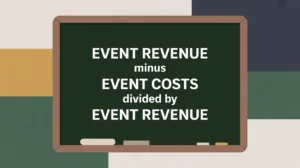Importance of Unit Cost / Cost per Beneficiary
Unit cost, often expressed as cost per beneficiary, allows nonprofits to measure efficiency and compare the cost of delivering services across programs, geographies, or time periods. This metric matters because it translates financial data into relatable terms that show stakeholders how much it costs to serve one individual or deliver one unit of service. For nonprofits in social innovation and international development, unit cost is especially critical for grant proposals, donor reporting, and program evaluation, since it demonstrates accountability and value for money.
Definition and Features
Unit cost / cost per beneficiary is defined as the total program expenses divided by the number of individuals served (or units delivered). Key features include:
- Formula: Total Program Costs ÷ Total Beneficiaries (or service units).
- Variability: depends on context, scale, geography, and program design.
- Transparency: highlights efficiency but also reveals funding or delivery gaps.
- Comparability: allows benchmarking across programs, sectors, or organizations.
This measure differs from broader financial ratios because it focuses specifically on the cost of delivering impact at the individual or service-unit level.
How This Works in Practice
In practice, nonprofits calculate unit costs as part of budgeting, monitoring, and evaluation. For example, a literacy program costing $500,000 that reaches 10,000 learners has a cost per beneficiary of $50. Finance teams ensure accurate allocation of both direct and relevant indirect costs, while program teams track the number of beneficiaries served. Donors may request unit cost data in proposals to assess efficiency and scalability. Boards use the metric to evaluate program performance, while management may analyze trends over time to identify areas for cost reduction or improved effectiveness.
Implications for Social Innovation
For nonprofits in social innovation and international development, unit cost / cost per beneficiary is a powerful tool for communicating efficiency and impact. Transparent reporting reduces information asymmetry by showing stakeholders how resources translate into real-world services and outcomes. Donors gain confidence in organizations that can demonstrate cost-effectiveness without oversimplifying complex work. However, nonprofits must contextualize the measure, noting that higher costs may reflect deeper engagement or systemic change rather than inefficiency. By tracking and communicating unit costs thoughtfully, nonprofits can strengthen accountability, refine program design, and build credibility in pursuing sustainable, scalable impact.







